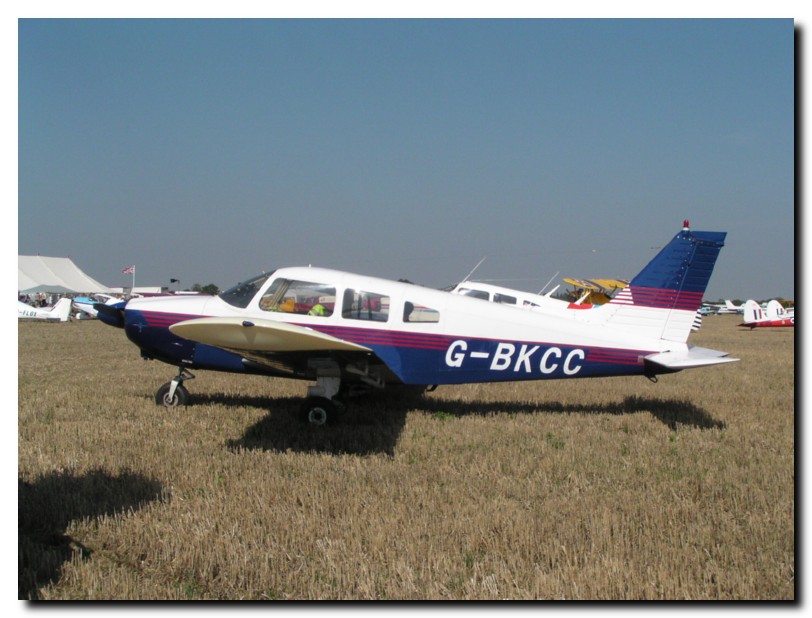On the initial conversion flight, buzzing around and experimenting with the handling while a long way from the ground, the G-BKCC didn't really feel that different to DJ, the larger of the Robin aircraft that I'd learned in and hired immediately after my PPL. Even the landing went well.
 |
| Very nice Cessna about to leave for Germany on a not very nice day |
The next time we were due to fly was a typical British summer day - overcast and drizzling - and I couldn't even see the tops of the hills near the airfield, which is bad news, seeing as they're only 800ft high. So it was a couple of hours spent sitting round in the flying club, reading through the manual for 'CC (yep, it comes with an instruction book!), and cautiously looking out of the window. Then a Cessna with a fancy computerised cockpit and an IMC pilot departed the club for Germany into the murk, but with the promise of better weather at the destination, and no doubt was in perfect sunshing on top of the cloud a few minutes later - one day, that'll be me!
But after a while the cloud was high enough to do some circuits, which was our aim for the day anyway, and the rain had stopped, so it was time to go out and check out the aircraft. It was still blustery and generally a bit damp, but definitely flyable. We took off from runway 27 with the intention of doing a full circuit to land on the same, but were immediately asked to reposition to land on runway 22 instead, because the wind had altered...this was going to be a complicated day!
We worked hard, and set up all of the different landing and takeoffs that we could think of - normal landings, flapless, powerless gliding and a short-field landing and take off at just 70mph 'over the fence' of the airfield, managing to land, stop and take off within about 600m - pretty short for a big lump like CC. We switched runway (again!) to do some cross-wind work and eventually, after yet another runway change, pulled up to a stop and called it a day. We'd only flown for an 55 minutes but landed 10 times and used all 3 runways at Gloucester, a new record for me pretty intense in an aircraft that I'm unfamiliar with, but working hard when you're training makes it easier when you do it in 'real life'...I had to take a nap that afternoon though!
 |
| Very fun looking Skybolt and perfect conditions...tempting! |
The next booking was for the August bank holiday - normally a sure fire crappy weather occasion, but actually conditions were absolutely perfect. The plan was to take off from Gloucester and buzz around to some of the local farm strips, taking in some grass landings - something that I hadn't done before.
It seems very strange, lining up into a small grass strip. We landed at Ledbury and Croft Farm, which are both really just green fields in amongst a big landscape of green fields. The trees and hedges just off of the runway concentrate the mind a bit too! Touching down is the same as on tarmac though, and then it's not much bumpier than than some of the hard strips I've landed at - the surface at Elstree was definitely as bad as either of the grass fields!
 |
| CC At rest after the flight |
It was a great flight, just what I needed after the hard work of the previous circuits session. Perfect weather and the relaxed aims of the flight reminded me what flying is supposed to be about - enjoying yourself! Phil's quite happy to do a similar type of flight next time, which will just leave an hour or so to make my time up to the insurance requirement and to get up to speed with more general handling and circuit practice. I'm confident that that will be enough to get me to that safe standard required for flying solo in CC, but if not, then I've got no qualms about having another hour or two of instruction. The aim, after all is to get better!
Looking back through to logbook now, things seem to be happening quite quickly. I've flown nearly 10 hours since my test, and I've got more than 100 landings under my belt! It only seems like yesterday that I was waiting nervously at the club for my first ever lesson! It's good to be making progress.








